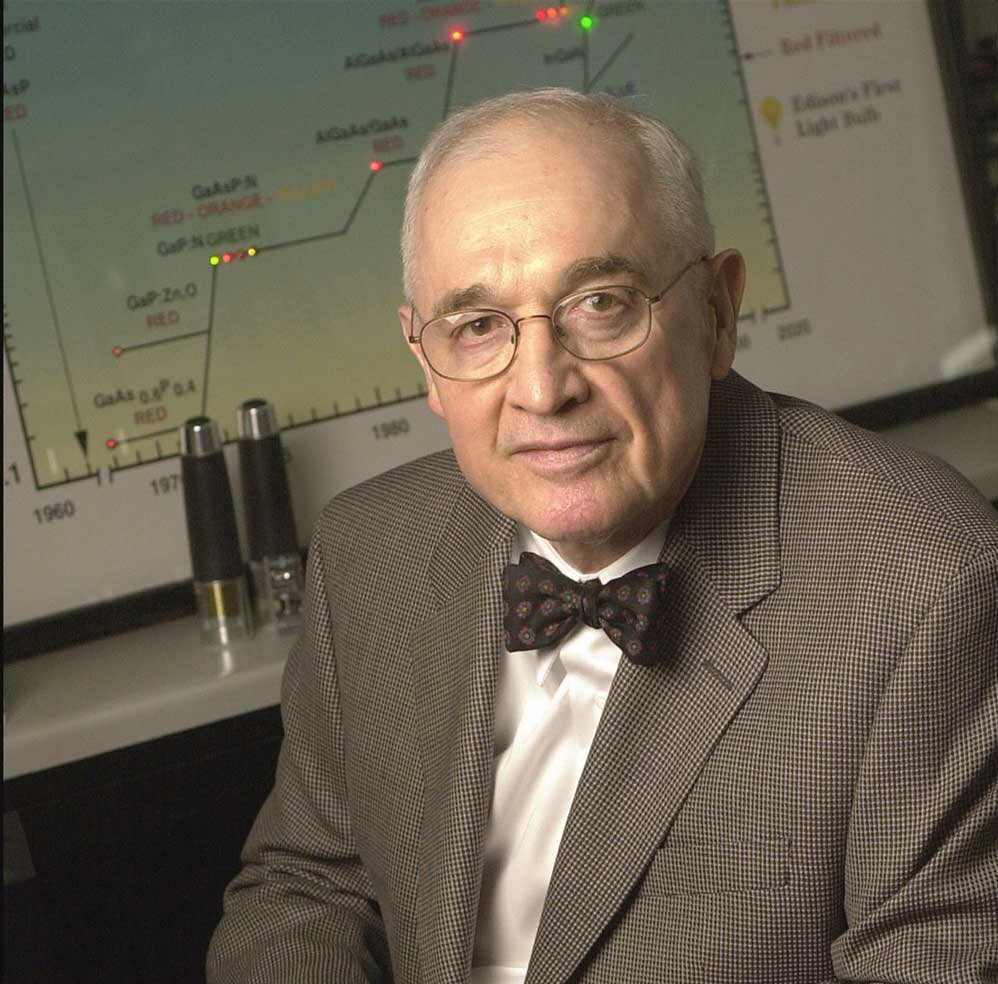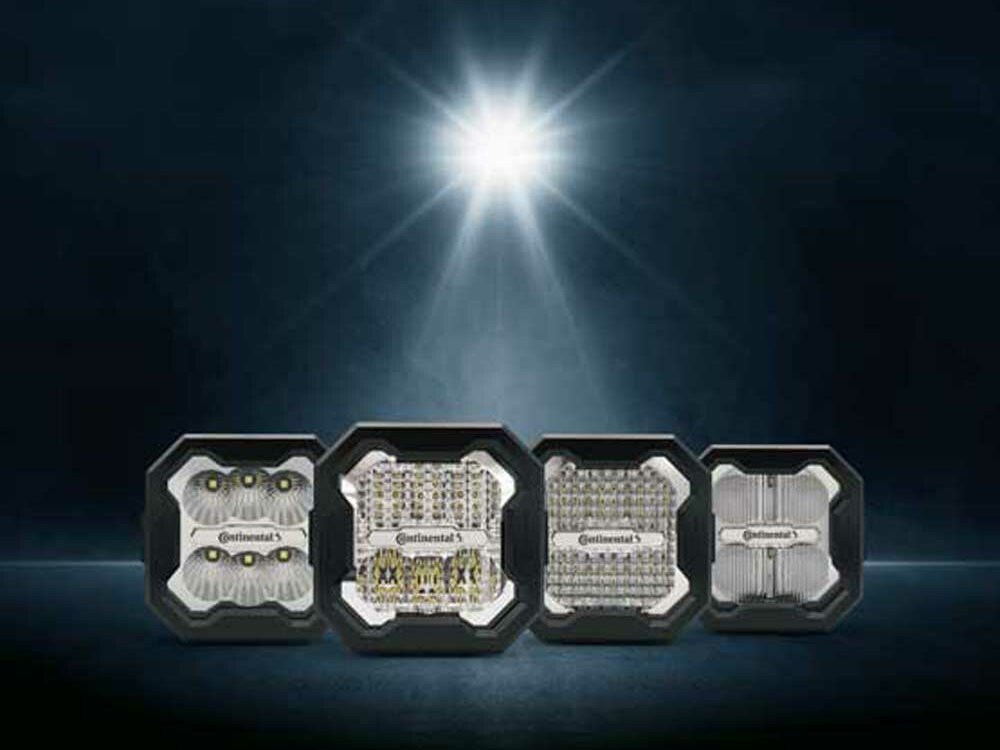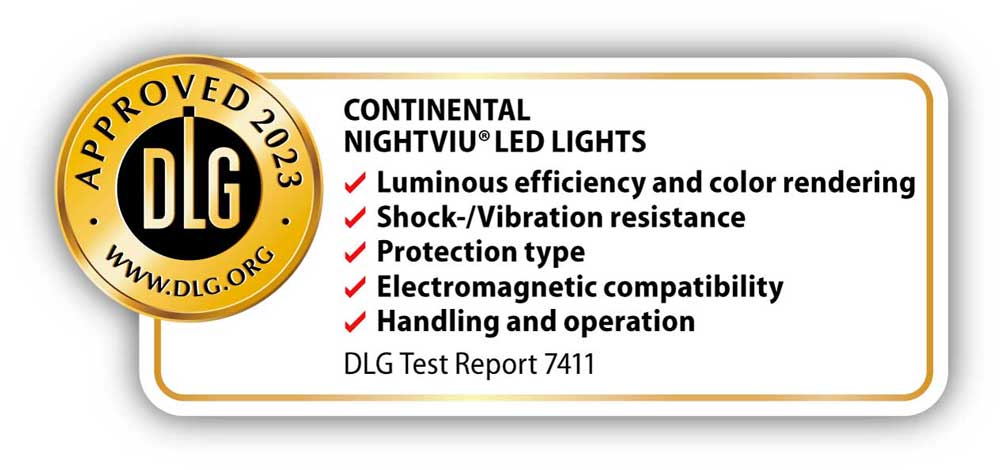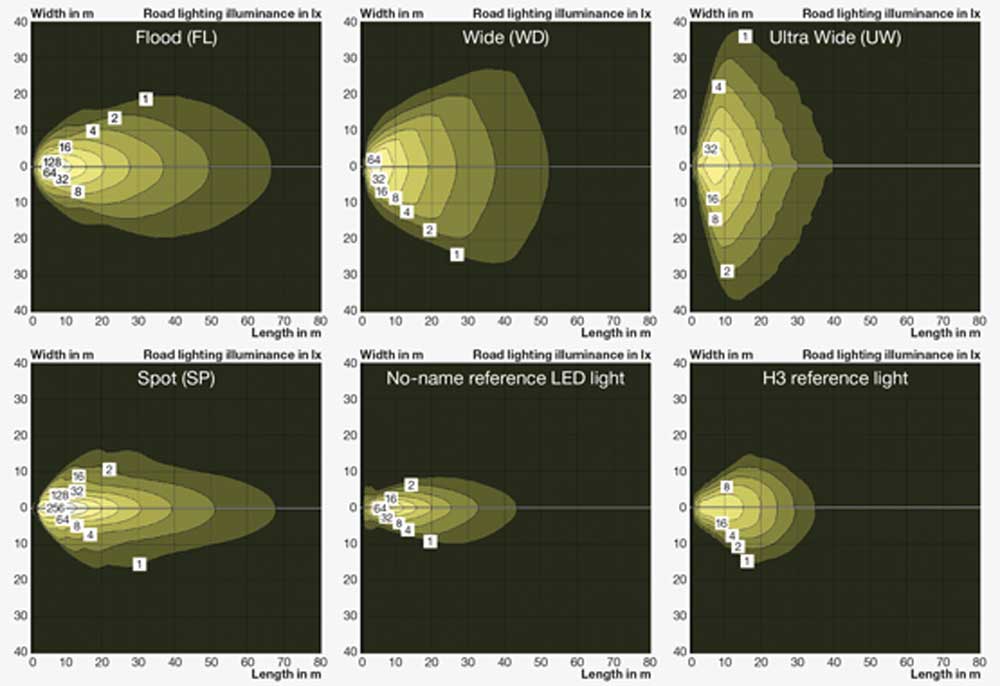Continental NightViu LED work lights turn night into day
By Andreas Horn, DLG Test Center Technology and Farm Inputs
Long working days, poor weather conditions and darkness: field work, especially at harvest time, does not always take place under ideal conditions. Manufacturers have long since responded to this and have significantly increased the range of work lights fitted to tractors and self-propelled machines in recent decades.
LED replaces halogen
The first LED (light-emitting diode) came onto the market in the early 1960s, developed by the American Nick Holonyak. Thanks to constant technological improvements, the luminous efficacy of LEDs became ever greater, and later blue LEDs were developed, as well as white LEDs based on them. In the mid-2000s, the first LED light sources came onto the market, which are now widely used and have replaced most other light sources in everyday life.
LED technology is also widely used in vehicle technology today. One of the major advantages here is that the light color of a white LED is relatively close to daylight and the human eye can therefore recognize contrasts better. In addition, there is a greater range, because depending on the design and shape of the headlamp, LEDs approved for road traffic can shine for around 80 m, while halogen lights often only reach 50 or 60 m.
Important: "general type approval"
In the vehicle sector in particular, complete LED headlights are generally used and not just the bulbs replaced. The reason for this is the relative sensitivity of LED technology to overheating, whereby - in contrast to conventional light sources - both efficiency and durability suffer. In addition, manufacturers of cheap goods from the Far East in particular generally do not have "general type approval" for their products.
In other words, anyone who installs such LED lamps without approval and uses them on the road may lose their operating license, which can result in a fine and possibly the loss of insurance cover and a ban on further driving in the event of an inspection. The first retrofit H7 LED bulb that can be replaced with a halogen bulb was only approved in Germany in the fall of 2020.
Completely new test program
The DLG experts have developed a completely new test program for the DLG test of LED worklights. This comprehensively evaluates the suitability of the worklights for use on agricultural and forestry vehicles and therefore includes the assessment of technical parameters such as luminous efficacy and color rendering as well as resistance to the harsh operating conditions with impact and vibration loads. Because a high-pressure cleaner is often used for cleaning agricultural machinery, the protection class is included in the test, while proof of electromagnetic compatibility is important for use in vehicles. In addition, the handling and operation by farmers is evaluated after practical use.
DLG test at a glance
Scope of the test:
- Light output and color rendering
- Shock and vibration resistance
- Protection class
- Electromagnetic compatibility
- Handling and operation
Continental NightViu LED work lights put to the test
The NightViu LED lights from Continental presented for testing are available in Spot, Flood, Wide and Ultra-wide versions, which - with the same luminous flux of 3,500 lumens (lm) from an electrical output of 35 watts (W) - differ in the illuminated area. The light color is around 6,000 Kelvin. Continental specifies a service life of over 5,000 hours for the luminaire. In the test, the worklights to be tested were compared with a standard H3 worklight and a frequently sold no-name LED worklight from online retailers, each with comparable specifications.
Results and Summary
It should be particularly emphasized that in the test, the luminous efficacy of the spot and flood housing variants was rated as very good at 100 lm/W and even 103 lm/W respectively, while the wide and ultrawide housings were still rated as good at 98 and 90 lm/W respectively. In concrete terms, this means that the Continental headlights are significantly better than a standard H3 worklight and also clearly outperform the reference of the no-name LED worklight. The actual light distribution is shown in the pictures.
The lights meet all requirements regarding impact and vibration loads as well as electromagnetic compatibility. With protection class IP6K9K, cleaning with a high-pressure cleaner is possible without any problems. All tested Continental work lights survived polarity reversal without damage and remained in the "good" rating range with a maximum housing temperature of 55 °C. The NightViu work lights from Continental are therefore recommended for applications with high stress influences, such as in agriculture, which was documented by the award of a "DLG-APPROVED" test mark.
The complete test report is available for free download: https://www.dlg.org/en/agriculture/tests/test-reports/tractors-machines-and-electronic-systems/continental-led-work-lights-nightviu-led-lights






